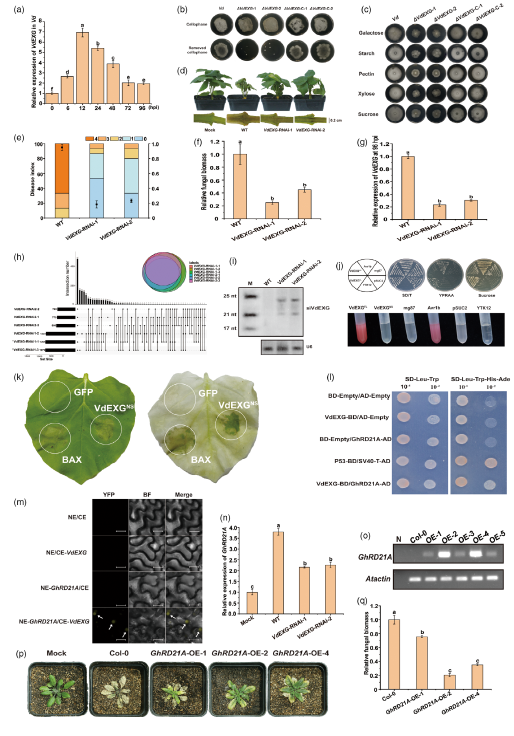Abstract:
Verticillium wilt, caused by the soil-borne pathogenic fungus Verticillium dahliae (Vd ), represents a devastating disease impacting cotton (Gossypium spp.). However, the limited efficacy of measures to control Verticillium wilt arises because Vdcolonizes the host vascular system, as well as the inherent resilience of Vd resting structures (microsclerotia), to various environmental influences (Fradin and Thomma, 2010). Breedingresistant cotton cultivars are the most economical and efficient approach to increasing host resistance to pathogens (Kochet al., 2019). One such strategy involves the utilization of hostinduced gene silencing (HIGS) to target Vd effector genes.
Key Words:
Verticillium wilt, Verticillium dahliae, VdEXG, hostinduced gene silencing, GhRD21A.

|